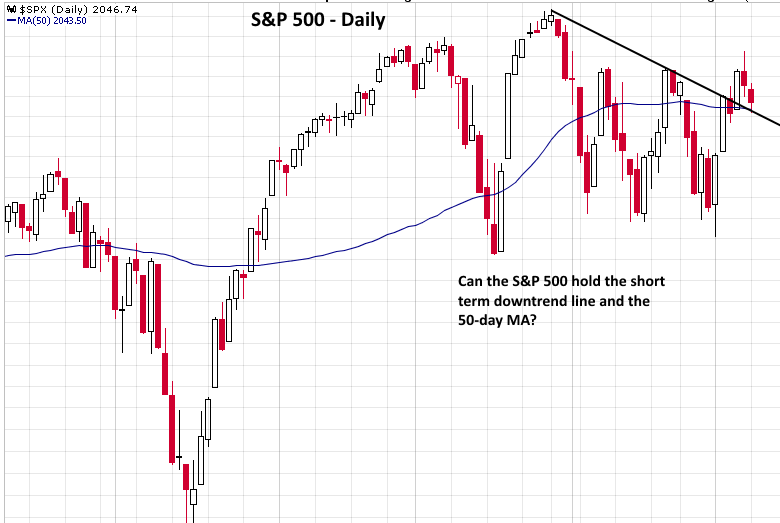The First 5 ETFs You Should Ever Buy (BND EFA IVV IWM SPY VNQ VTI)
Post on: 29 Июль, 2015 No Comment

Too many people never start investing because they think it’s too complicated. Thanks to exchange-traded funds, though, you can create a top-notch investment portfolio easily without spending a fortune in fees and commissions.
Building a portfolio from the ground up
Whether you’ve never invested before or are a seasoned investor, the key to using ETFs for portfolio building is to create a core set of funds that cover all your bases. Once you’ve got your core set up, you can then spice up your investments with selected niche ETFs that focus on specialized areas that interest you. But skipping straight to those specialty ETFs without getting your core portfolio in order is like drinking Tabasco straight out of the bottle: a wild experience, but not the sort of thing that leaves you comfortable.
That’s why I’ve come up with five ETFs that you can use to form the foundation of your investments. This simple portfolio is designed so that even if you can’t afford to add all five at the same time, you can buy the first on the list and add the rest of the ETFs as you build your savings.
1. A large-cap broad-market fund
The first ingredient to a successful portfolio is to get exposure to U.S. large-cap stocks. As the drivers of the world economy, the companies that a large-cap ETF holds are household names you’ll be very familiar with. Moreover, they’re the sort of stocks you can feel comfortable owning even as a beginner, and they can teach you a lot about how investing works and the relationship between a company’s business and its share price.
Which ETF you choose for the job depends on a number of things, such as who you use as your discount broker. But whether you go with the S&P 500 ETFs SPDR Trust ( NYSE: SPY ) or iShares S&P 500 ( NYSE: IVV ) or the more all-inclusive Vanguard Total Stock Market ETF ( NYSE: VTI ). your first ETF will get your portfolio off on the right foot.
2. An international ETF
The next component to diversify your portfolio is international exposure. Foreign stocks don’t just make you a part owner of many of the best companies in the world. They also protect your portfolio from a falling U.S. dollar and let you benefit from more favorable economic conditions elsewhere in the world.
The broad-based iShares MSCI EAFE ETF ( NYSE: EFA ) is one of the largest suitable choices in this category, but you can find similar funds from Vanguard and other ETF providers. Later, as you build out your portfolio, adding emerging-market specific funds also makes sense.
3. A small-cap fund
Big companies are great for stability, which is why they take first priority as you create a portfolio. But once you have a firm footing, historically, small-cap stocks have offered better returns and greater growth potential. Although they come with greater risk, the rewards are worth it.
Even if you already own some small caps in a total market fund, you may well find it appropriate to boost your exposure beyond the small portion that those ETFs give you to small caps. The iShares Russell 2000 ETF ( NYSE: IWM ) or similar offerings from other providers give you the ability to fine-tune your exposure however you want.
4. A basic bond fund
With the most basic asset allocations dividing money between stocks and bonds, why do you have to wait until No. 4 on the list before you get to a bond fund? The answer is simple: If you have money in cash, that’s almost as good as a bond fund right now. Many bonds pay next to no interest, and unlike cash in the bank, you can actually lose money on bonds if interest rates go up.
Over the long run, though, bonds will help your portfolio stay balanced and steady. Vanguard Total Bond Market ETF ( NYSE: BND ) owns a variety of different types of bonds that combine the security of Treasuries with the higher yields of high-quality corporate bonds. Other providers offer similar broad-market bond funds that can also serve you well.
5. A real estate ETF
All sorts of funds could make the final slot, but my nod goes to funds based on REITs. As another fixed-income choice, the fortunes of real estate investment trusts are closely tied to interest rates like bonds are, but they have a more direct link to the health of the economy, since a strong commercial sector adds demand to the commercial real estate market.
Vanguard REIT Index ( NYSE: VNQ ) does a good job here, but you’ll also find suitable real estate funds with other providers as well.
Get started
You don’t have to buy all five categories of funds at once. But as you develop your portfolio, you’ll find that with these five areas, it’ll be easy to get the right mix for your own particular needs. That beats the pants off staying on the sidelines.
Once you have your core ETF portfolio set up, venture out to profit-making opportunities. Click here to read The Motley Fool’s free report, 3 ETFs Set to Soar During the Recovery .
Fool contributor Dan Caplinger has indeed drunk Tabasco straight out of the bottle. It was an eye-opening experience. He owns shares of the iShares ETFs covering the S&P 500, MSCI EAFE, and Russell 2000, as well as Vanguard’s REIT Index. Try any of our Foolish newsletter services free for 30 days . We Fools may not all hold the same opinions, but we all believe that considering a diverse range of insights makes us better investors. The Fool’s disclosure policy is the first disclosure policy you should rely on.














